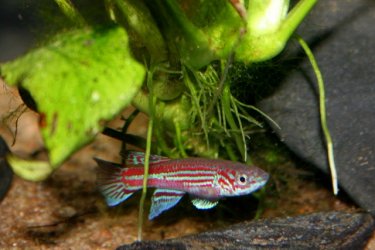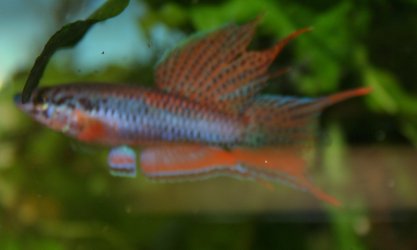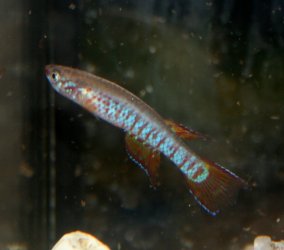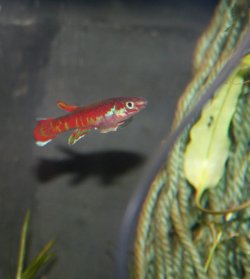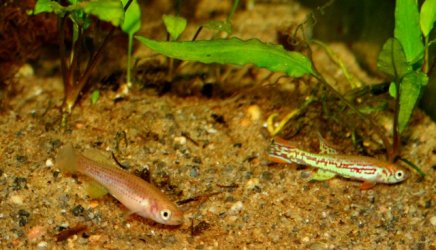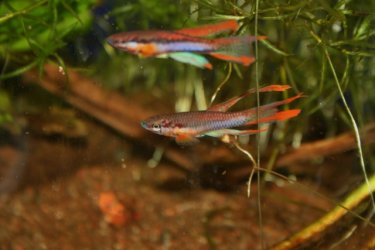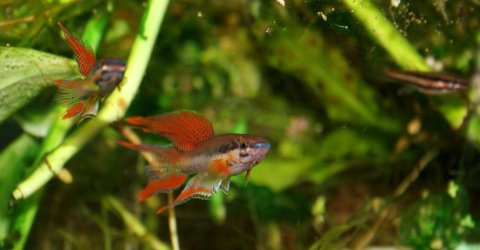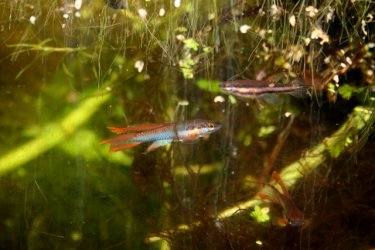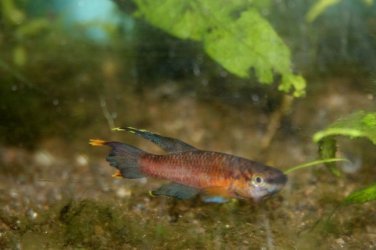That cover is what they look like.
The elderly members of our club would get angry at the science and say all the two striped Aphyosemions were bivittatum, and that Chromaphyosemion was just not valid. The Europeans have accepted the Chromaphyosemion name, and now with DNA work and exploration, we have a wealth of different Chromaphyos in the hobby, or more commonly, that were in the hobby in the past.
They're all great little fish, and unlike a lot of the killies of western and central Africa, can handle themselves and thrive in quiet community tanks. They can often handle warmer temperatures than Aphyosemions, though there are exceptions.
To steal from Shrek, the hobby is like an onion, with so many layers to reveal. Chromaphyos are an obscure but very good one.
I think of my biteniatum and poliaki as pigeon like fish. You rarely to never see babies, yet they breed regularly and steadily. The fry are masters of hiding until they reach about one cm. I was very surprised the other day when I fed my biteniatum and the food scared out 3 or 4 fry - I hadn't seen fry that young for several years, even though I've distributed quite a few young pairs to people.
A quirk with biteniatum for me is if I try to collect eggs as I do with other killies, they always fungus. If I don't touch them, they're fine. With their relatives, Chromaphyosemion poliaki, the eggs are indestructible. So I have 2 10 gallons with lots of plants in them, and I watch the villages of biteniatum expand in the them. Males show off a lot, but no harm comes of it.
The third picture shows a female. The 4th picture is Chromaphyo, poliaki Mutungene, a darker coloured fish that likes cooler water (they can breed at 17c) and that I've had since they came from the wild in 2005.


